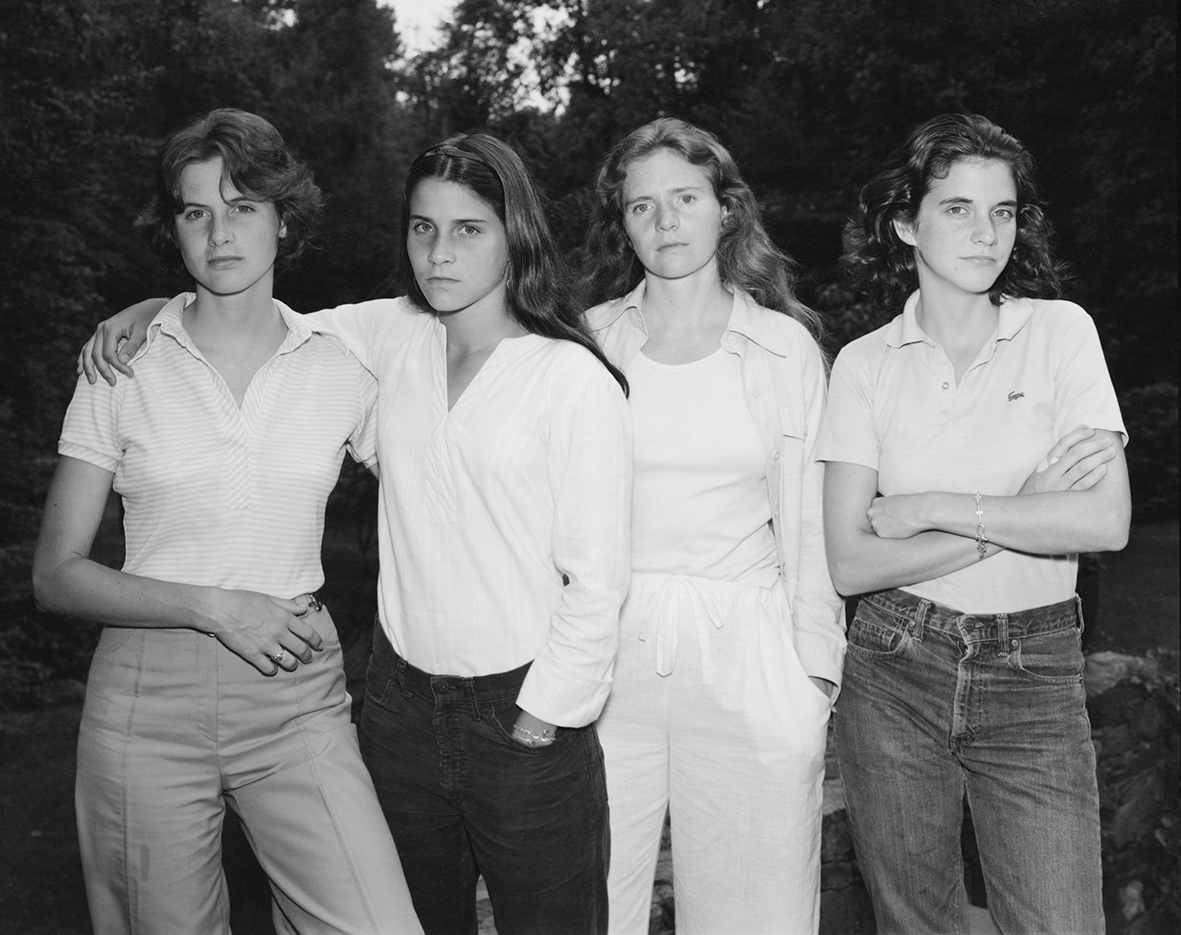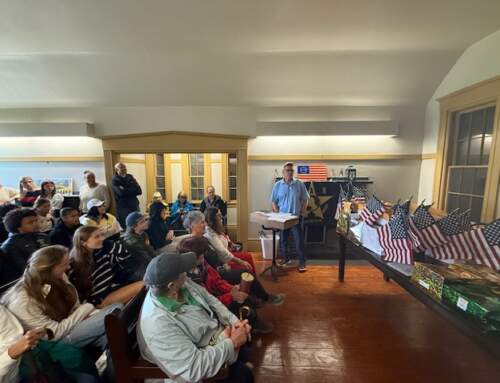By Richard Campbell
Bridging the span between documentary and art photography Nicholas Nixon’s current show at the ICA recreates the passage of time from 1975 to our current day. For younger viewers unfamiliar with the depth and quality of art photography created using the 8×10 format in black and white darkroom processed and printed on real photographic paper, these images reveal not only masterful composition and social import, but a glimpse into the prevailing sentiments from the American main street and the fringes of society.
The central core of the show is the ongoing project of the Brown Sisters, in which Nixon poses his wife Bebe and her sisters, Heather, Mimi, and Laurie cinematically across time, from 1975 to the current day, documenting their physical and emotional changes. The persistence in this title must refer to Nixon’s doggedness in continually recapturing his subject’s year after year. The show also includes other time sensitive images in a way that chronicles not only his dedication to a life-long photographic mission, but to revealing the relationships of his subjects through the perspective of the larger human family.
The first three times I went through the cycle I was a little haunted by the apparent directness of the Brown sisters, and the sometimes uneasy relation that they bore to the contemporary images of suffering. The sisters appear year after year in the same order standing gazing into the camera, while pictures displayed around their portraits reveal iconic portraits of anonymous Americans. Nixon is kind of the anti-Arbus, that is, he does not revel in the weirdness or the suffering of his subjects, or even objectify them to guilt trip us into having a conscience. His images are statements of grace, beyond redemption, beyond existence, and into a world where the lens is not the conveyer of ancillary truths, but distill that moment for which most of us cannot know, but may sometime come to know.
Nixon explains that he alters the view of his subjects by changing their relationship to the frame. There is also a change in exposure and printing- that at times gives a ghost like feeling, as if the women become shadows of themselves, and then re-finds identities in new expressions to become a unified sister force. He projects his relationship between his wife and her sisters for emotional import as he pulls us along into documentary. In the video description on the ICA website, Bebe who is a counselor in a Cancer hospital describes how she believes we have limited time, and how we need to use it wisely. The two are frank individuals, unadorned, with slight philosophical pretension- but pretty focused upon the truth that can be found in the process of art.
Truly great photographers realize that insight into the subject is most important, that the view of the world the photographer shows relies upon a strict form of empathy and sensitivity. In moving close to people who are themselves on the brink of death, Nixon moves us to acutely feel their pain without being muddled. What is elegiac and above worldly finds its extension through a philosophy of how photography impacts life. In a world inundated with meaningless, mediocre cell phone images; people unfamiliar with his work will be astonished at the print quality and careful editing of these images. The show runs until April 22nd. The ICA has free admission on Thursday evenings 5pm to 9pm., when any donation is appreciated.






